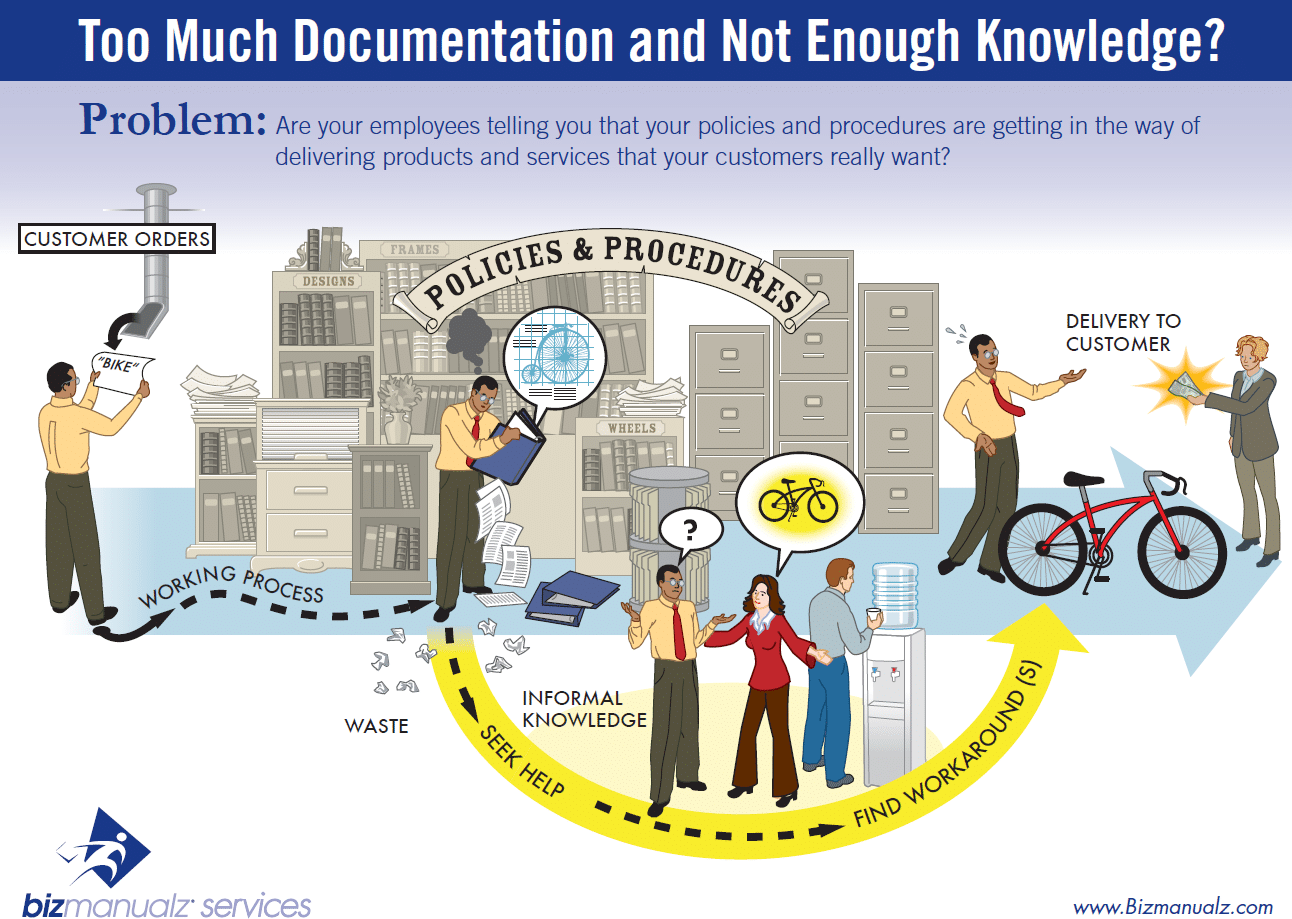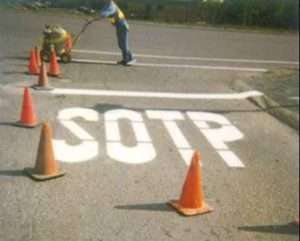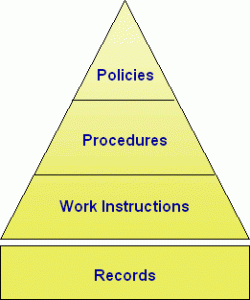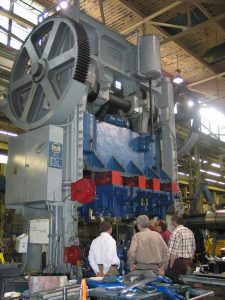How are Management Procedures Used?

Quality management procedures are critical to improvement. If you are a manager of a group of people then you basically have two ways of using procedures, either you are using them to drive consistency and improvement or you’re not. How are your management procedures used?
Managers Not Using Procedures
First let’s define what not using management procedures means. It means either that you have not documented your work standards in a work instruction or procedure for what is expected of a task, process, or worker. Alternatively, you have documentation, but you do not use it in any meaningful way. Perhaps you have documented procedures to show an auditor for ISO conformance or financial compliance and that’s all your procedures are used for – your auditor. Your procedures are much more valuable.
If you are a manager that is not using procedures, then you are probably the type of manager that believes that everyone is doing the best they can or at least you believe your employees when they say they are doing the best they can. After all, it’s one problem after another at work.
How can anyone respond any better to all the daily interruptions, machine breakdowns, supplier delays, and mistakes that “other” people make? Everyone is doing the best they can under the circumstances. If this sounds familiar, then you are like many managers practicing “fire drill management” focused on putting out one fire after another, every day. How could it work any other way?
What is Happening When Your Don’t Use Procedures
If you have not planned out the work then workers have no plan to follow leaving them to get pulled in any direction to solve any problem that arises. Orders have to get out so you have to solve the immediate problem, right?
Now ask yourself, if you do not have a daily plan with clear work standards defined, then how do you know that anyone is doing the best they can? I mean, compared to what is your idea of “best” defined?
For example, most companies measure On Time Delivery (OTD), or at least should measure OTD. If your measure of OTD is less than 100% then NO your people are not doing the best they can. The goal is 100% On Time! Anything less is not the best, the best is 100% period. Now I know you have rationalized it out and you have to take into account daily interruptions, machine breakdowns, supplier delays, and mistakes that “other” people make. Or do you?
No Plan Means No Procedures
Do you have a plan for how to get all orders out on time? A plan for how to prevent daily interruptions, machine breakdowns, supplier delays, and mistakes that “other” people make. What would this plan look like? How about a set of procedures that define the standard work required to ensure that orders get out the door 100% on time. Isn’t that what procedures are designed for in the first place?
What are Procedures For?
Some think that compliance requires management procedures or they are for training to show new employees how a job is done. Some regulations like Sarbanes Oxley require procedures to control risks. And some organizations like Toyota use procedures to document the current state for continuous improvement. What do you use procedure for?
Common answers to the question of Why Have Procedures? that people have used are:
- Compliance
- Operational Needs (i.e. consistency)
- Manage Risks
- Continuous Improvement
What do these four answers have in common?
- Compliance means the government or some standards body has stepped into the market because some type of failure has occurred and the authorities believe they need to get involved because it is not getting fixed.
- Operational Needs means failures are costing the organization too much money so it needs to get fixed.
- Manage Risks means that the potential or severity for failure is too high so the risks needs to be managed or fixed. And
- Continuous Improvement means that there is a good business case to lower costs/increase profits, or increase market share by fixing the current state.
Procedures are about fixing problems. Sure they provide compliance, can help in training, they do reduce risks if used correctly, and they are great for continuous improvement, but the real reason you need procedures is because they fix problems. They make problems go away and if problems go away then they reduce your cost of doing business.
What is the Value of Procedures?
Procedures can provide a lot of business value if they are used. Often times people write them and put them away. In the old days you might have a big binder of procedures, but nowadays, procedures tend to be stored on a server where people forget about them quickly. If you want to get more value out of your procedures then you need to incorporate them into your management system.
 How Do You Use Procedures?
How Do You Use Procedures?
Employees use procedures for training, to ensure they do not repeat mistakes others have made. Are your procedures detailed enough to prevent mistakes.
For example, do your procedures say things like:
- All personnel will have the appropriate level of training
- Use the forms found on the server
- All fields must be completed
This example sounds simple but does this describe enough detail to prevent errors? Each point is meant to resolve an error. Point (1) means we need trained personnel, but what training are we talking about and how much skill is required. Point (2) means we need a certain form but which one? Point (3) talks about completing all fields, but there is no information about what information goes in a field and is there a certain way to complete each field.
Hopefully the training would answer all of these questions but in my experience training alone may not. An oversight process is needed with followup from management to ensure that the right answers are being entered into the right fields, the right way.
Managers Using Procedures
Managers use procedures to reduce problems in the workflow to ensure that people are not making the same mistakes. As a manager. if you are not using procedures, then is consistency important to you?
Mangers that use quality management procedures are using them to ensure there are no interruptions in the work flow, That preventive maintenance is occurring regularly to ensure there are no machine breakdowns, that suppliers are selected and managed to ensure there are no supplier delays, and other managers are also using procedures to mistake-proof work to ensure that “other” people are not making mistakes.
You cannot do it alone. Procedures are part of a management system that works together to ensure that orders are out the door 100% on time. If you are not using procedures then you are sending a signal that consistency is not important.
Notice I said “managers using procedures”. That’s because procedures are for managers. Yes employees use procedures too, but it is the manager or supervisor that must ensure procedure are used and followed. How do managers use procedures?
For example, using our on time delivery scenario above, let’s say we have a machine breakdown that is causing today’s fire drill. Then the management response should be to ask:
- Why is this machine breaking down?
- When was the last time it was serviced?
- Do we have a lot of unplanned maintenance occurring?
- What does the preventive management procedure say about this?
- How effective is our preventive maintenance?
Management’s job is to ask questions and hold maintenance accountable to its work standards, procedures, targets and goals. If the goals are not preventing machine breakdowns, then change the goals and do more preventive maintenance. If workers cannot perform to the standard then train them. If the tools are insufficient, or there are not enough maintenance people then change the budget, buy new machines that require less maintenance, or consider another action.
That is what mangers do inside the management loop. They see that work standards are developed to accomplish the job, they ensure they are documented into procedures, they allocate resources to achieve the work standards, and then they follow up to ensure that planned work standard results are achieved. The procedures are there to communicate what management needs – 100% on time delivery – and how management has planned out the achievement of the work standards. Are the work standards perfect?
Is Management Always Right?
Management procedures do not represent a one time event where management sits down and develops perfect work standards. Quality management procedures are meant to be dynamic and change in order to adapt to the environment, competition, changing customer needs, or varying workforce competence. In other words, circumstances changes and so should your procedures.
The goal is continuous improvement not perfection. Management does not have to always be right to be good. Management just needs to take actions that achieve planned results. Improvements happen as a result of iterations of the management loop. This is the process approach of Plan, Do, Check, Act (PDCA). It is the cornerstone of a quality management system. Your management procedures make up the cornerstone of your management communication of your work standards. If you are not using procedures to communicate your work standards, then what else are they for – your auditor?
If managers are not holding workers accountable to work standards or allocating resources to see that the work standards are achieved, then what are they doing – firefighting? If management is fighting the fire then who is managing? Do you want managers solving problems or trained capable workers that are solving the problems?
Management Procedures Need to Be Used
If you want to bring out the best in your employees so they truly are doing the best they can, then you will need to define what “best” means and one way to do that is through your procedures. Afterall, management procedures need to be used to be effective. Give it a try and let me know what your experience is with procedures.
















